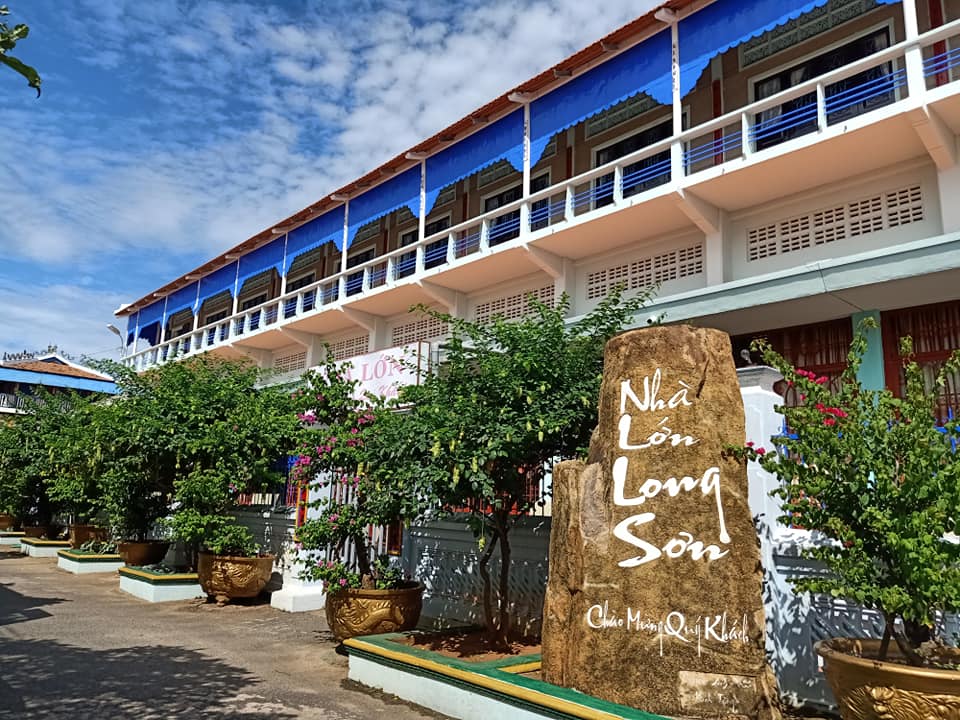The Tran Religion in the Long Son Region

Formation and Development History of the Tran Religion
According to the records of the Ba Ria - Vung Tau Museum, Le Van Muu was born in 1856 in Thien Khanh village, Ha Thanh district, Giang Thanh province (now Kien Giang province). In 1885, at the age of 30, he moved to An Giang seeking apprenticeship with Ngo Loi (1831-1890), the leader of the Four Palaces of Filial Piety religion, and participated in the anti-French resistance led by Loi. After the failed uprising, he relocated his family to the Nua mountain (now Long Son commune), establishing the Ba Trao settlement. Starting from 1910, he began the construction of the Great House of Long Son to worship gods, Buddha, immortals, saints, etc., and propagated his teachings to the local people. After his passing in 1925, the residents revered him as a benevolent figure and established the Co Lung Temple to honor him. Over time, the Tran Religion beliefs became entrenched in the local folklore.
To date, the Tran Religion has over a century of history and development. This faith is not confined to Long Son residents but has also spread to provinces in the Mekong Delta and Southeastern regions. According to the statistics from the Management Board of the Long Son Great House in 2011, there were approximately 20,000 Tran Religion followers nationwide.
.jpg)
Distinctive Features of the Tran Religion
The Tran Religion possesses many distinctive and differentiating features compared to other religions. Firstly, the remarkable architecture of the Great House of Long Son is noteworthy. This massive wooden structure is constructed from precious woods such as lim, sen, trac, and ba gu. Covering an area of about 2 hectares, it is divided into three areas: the shrine, community hall, school, market, the Ghe Sam conservation house, and the tomb area for Mr. Tran. The Great House blends folk beliefs with Confucianism and Taoism. It houses the eight celestial beings' engraved table and chairs, once used by King Thanh Thai at Bach Dinh. Additionally, there is a set of ancient wooden altar cabinets made from xa cu wood, originating from the Ha Dong region. The Great House was officially recognized as a historical and cultural relic by the Ministry of Culture - Information in 1991.
Secondly, regarding the doctrines and rules of the Tran Religion. This faith does not have scriptures or temple bells; instead, it relies on orally transmitted teachings within the community. There are no strict dietary restrictions or celibacy requirements for followers. Rather, emphasis is placed on self-cultivation, virtuous behavior, and moral integrity. The Tran Religion does not have temples or statues of Buddha; instead, there are shrines dedicated to deities and ancestors. The religious practices are simple, with ceremonies mainly occurring on two significant dates: the death anniversary of Mr. Tran (20th day of the 2nd lunar month) and Trung Cuu day (9th day of the 9th lunar month). The Tran Religion is inclusive, with no restrictions based on religion or ethnicity, promoting love for the country and humanity.
Thirdly, the customs and activities of Tran Religion followers. They typically wear black traditional clothing, tie their hair in a bun, go barefoot, and follow the belief of "head to the sky, feet on the ground." Followers often compose New Year's verses on the 21st day of the 12th lunar month. Burials take place within 24 hours, without considering specific dates and times, using cloth and woven mats instead of coffins, and shared clothing for everyone, irrespective of wealth. When getting married, followers choose only the 1st and 16th days of the lunar month, disregarding other dates.
The Tran Religion is a unique and distinct faith among the residents of the Long Son archipelago. It was founded by Le Van Muu, exhibiting distinctive characteristics in terms of architecture, doctrines, rules, and customs. The Tran Religion holds not only religious significance but also cultural and historical importance, contributing to the intangible cultural heritage of the Vietnamese people. It is a faith that fosters good qualities and values, as Mr. Tran taught in the past: Humanity, Righteousness, Propriety, Wisdom, and Trust, Loyalty, Filial Piety, Humaneness, and Patriotism.

